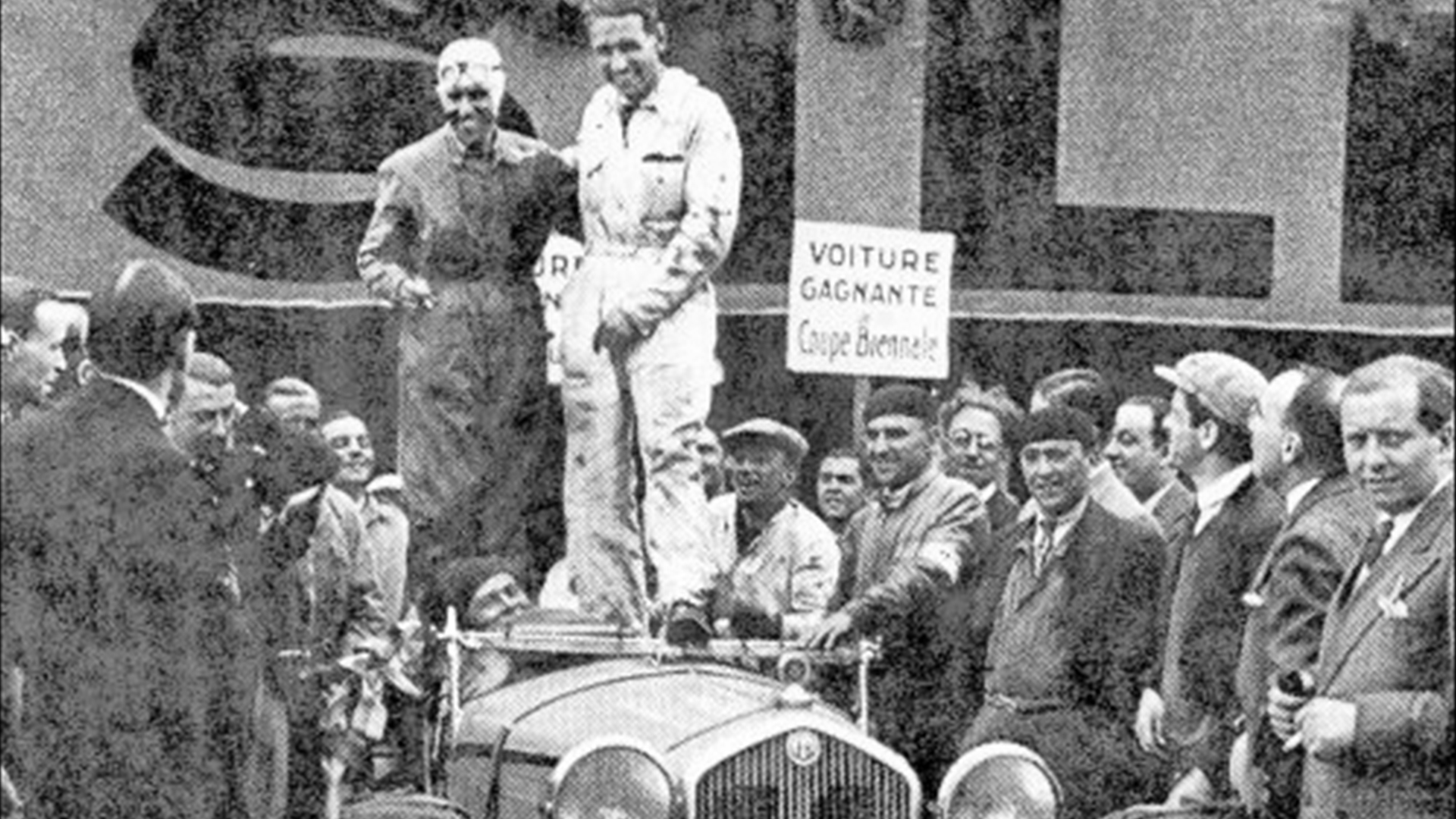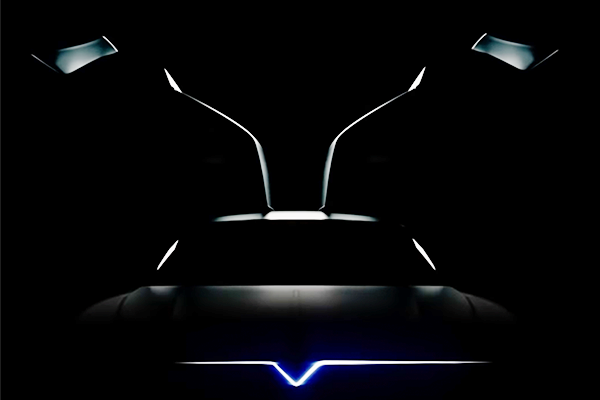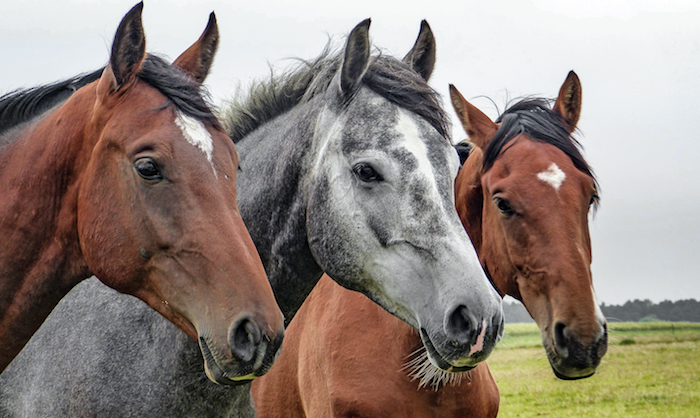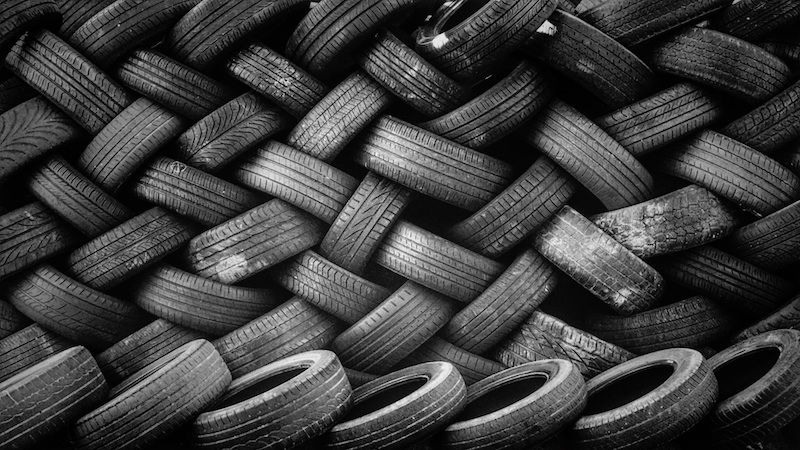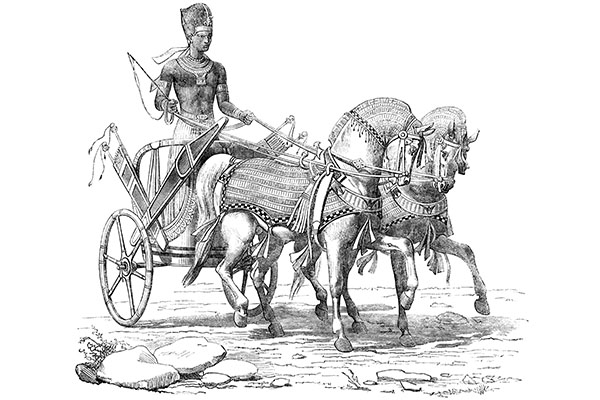For a long time, people have been shoehorning American engines into European or Japanese cars. There are plenty of old Datsun Z-cars, Jaguar X-types and Jaguar sedans running around with small-block Chevrolet engines in place of their temperamental OEM power. For a time in the '70s and '80s, though, boutique manufacturers did an end run around the process and put American V8s in their own cars.
Allard J1 and J2
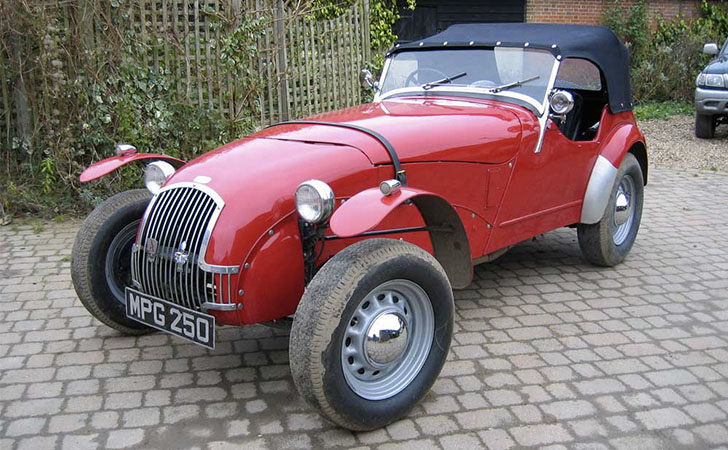
Allard J1 owned by Paul Harvey | Allard Owner's Club
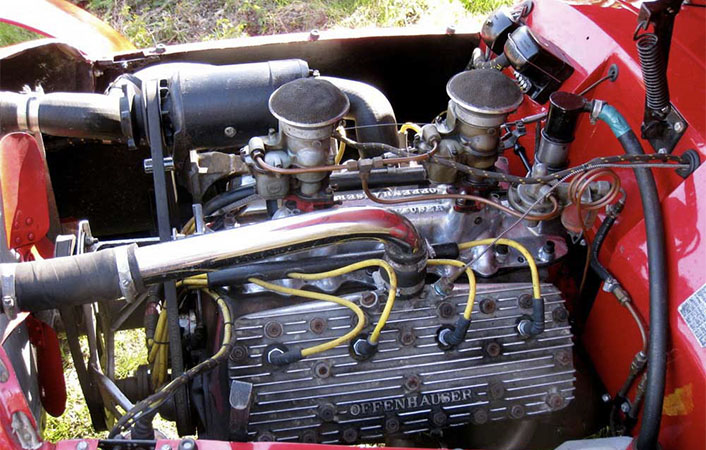
Under the hood of the Allard J1 owned by Paul Harvey | Allard Owner's Club
Allard had a fairly short run; this London-based carmaker was barely more than a cottage industry, producing only around 1900 cars before it went under for good in 1958.
Even before WWII, though, Allard was pirating flathead Ford V8s and Lincoln V12s for their roadsters that competed in "trials" — a pre-war version of rallies with cars running on near-impassable terrain against the clock. After the war, the J1 and J2 Allard models were introduced, with a motley assortment of Buick, Chrysler, Cadillac, Ford and Mercury V8s. Corvette fans are familiar with the name Zora Duntov; Duntov actually raced for Allard (as did Carroll Shelby) in the early '50s, driving a Cadillac-powered J2 at LeMans.
Jensen Interceptor
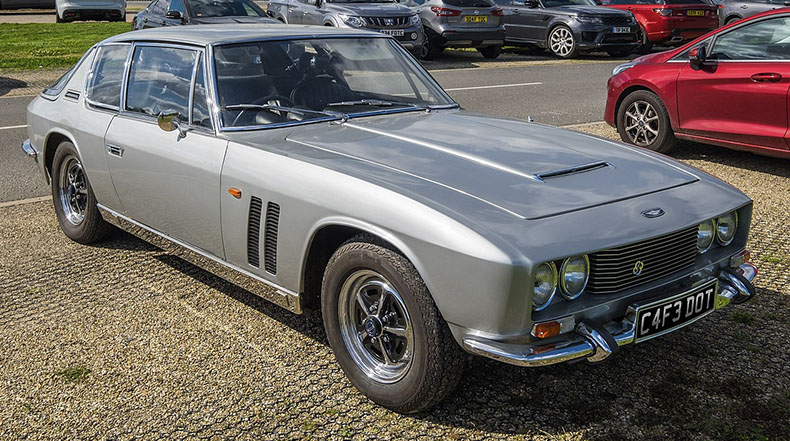
Jensen FF | Wikimedia Commons
Jensen was another on-again, off-again British automaker, based in West Bromwich, near Birmingham. The Interceptor name was first used for a 1950s sports model from Jensen, then was revived for a 2 + 2 Grand Touring model in 1966. The Interceptor had nice, if somewhat conservative, styling from Carrozzeria and had properly elegant interior appointments like a wood steering wheel, genuine walnut burl dashboard, leather upholstery, power windows and more.
It seems like the type of British sports car that requires a pipe and a tweed sports coat with suede elbow patches, but under the hood of the Interceptor was either a Chrysler 383 or 440 V8. The company went under in 1975 but was CPR'd for awhile in the late '80s, and Interceptors were produced with 250 hp Chrysler 360 V8s, until the company was sold again in 1990. There were plans to deliver an updated Interceptor, but sadly, receivership was around the corner and the company's assets were sold off in 1993.
The Interceptor wasn't a road-burning sports car; it was more of a personal luxury/grand touring ride, big and heavy and comfortable. It had atrocious fuel economy with the 440 engine, but chances are if you had the scratch for an Interceptor you weren't too worried about gas mileage anyway. The Mopar V8 power made it a stronger performer than American personal-luxury sleds from Lincoln and Oldsmobile, though, as well as European GTs from Citroen, BMW and Jaguar.
Interestingly, in 1968 the Interceptor FF (pictured above) was introduced, with all-wheel-drive, traction control and ABS brakes. You aren't likely to see one of those, however; they were only built with right-hand drive for British roads.
Morgan +8
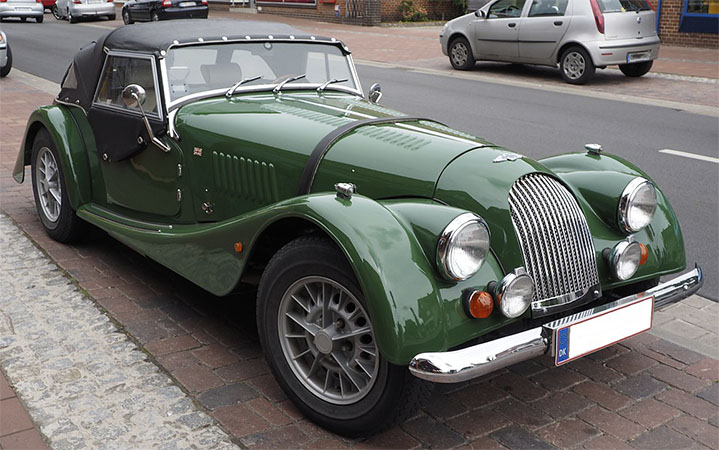
Morgan +8 | Hajotthu | Wikimedia Commons
Morgans were quaint little sports cars, low to the ground with a long hood, swooping fenders, a short little windscreen and a wood frame (!), well into the '70s. It was the type of car where you'd expect to see a small four-banger under the hood, maybe with a pair of SU carburetors. The +8 model, however, had something a little special in the form of the Rover V8.
In 1960, Buick introduced a 215 c.i. V8 with aluminum block and heads. Weighing in at just a shade over 300 pounds, the Buick 215 V8 was a potent little number, turning out 200 hp in stock form and 215 hp in an Oldsmobile turbocharged form. The BOP (Buick/Olds/Pontiac) 215 was troublesome, though; it had problems with oil and coolant leaks and many owners had issues with radiator clogging from coolant that wasn't compatible with aluminum. The engine made its way into more than a half-million GM compacts in the early '60s, but was discontinued in 1963.
A Rover honcho first saw the BOP 215 V8 on a visit to Mercury Marine, and realized this compact V8 would be great in some British iron. Rover convinced GM to sell the tooling for the engine in 1965, poached a retired Buick engineer for a consultant role and was off and running. The BOP 215 made its way into the Triumph TR8, the TVR, MGB V8 and many other platforms. In the case of the Morgan +8, the end result was a dated-looking British sports car that could sprint from 0-60 in just a shade over five seconds.
Sunbeam Tiger
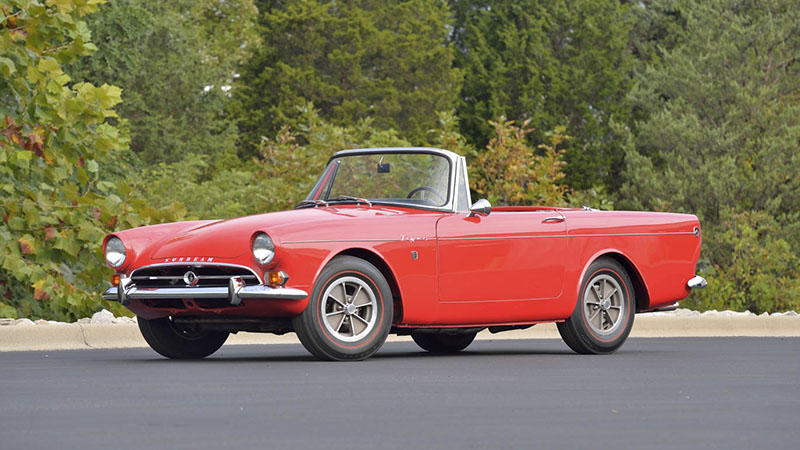
Sunbeam Tiger | Hagerty
Sunbeam, a subsidiary of Rootes Group, rolled out the stylish little Sunbeam Alpine roadster in '64. The Alpine was lightweight and nimble, but was (under)powered by an anemic, outdated 4-cylinder engine that delivered poky performance. Cognizant of the cachet that "Powered By Ferrari" would bring, Sunbeam tried to enter into a deal with Ferrari to redesign the motor , but talks broke down.
Ian Garrad, Sunbeam's manager of West Coast American operations, was friends with Carroll Shelby (can you guess where this is going?), who had already leveraged an American V8 into the AC Cobra. Garrad got a yardstick (cited in the automotive press as "a 'precision' instrument of questionable antecedents"), wrote down some dimensions and started looking for an American engine for the little convertible.
He found a likely prospect in the Ford 260 V8, and although it was a tight fit, the Ford engine worked (rumor has it that a sledgehammer was involved in reshaping the wheel wells). The original engine was mildly tuned for 164 hp, which still yielded a 0-60 time of around eight seconds; dealers gladly came across with a high-performance 260 that pumped out 245 hp, while still delivering 20 mpg .
Later versions featured Ford's 289 V8 for even better performance, and the Alpine's original suspension was robust enough that it only needed minor tweaks to handle the added weight of a V8 engine. Should you want to goose the 289 a bit, Los Angeles Tiger's catalog offered camshafts, limited-slip differentials, transmission scatter shields, Edelbrock induction kits of carbs and intakes and all sorts of fun goodies to squeeze a few more horses out of your Tiger.
Unfortunately, Rootes Group always had money issues and in 1965, Chrysler bought a controlling interest in the company. The folks at Mopar were not excited about being connected to any vehicle with a Ford engine, and the Chrysler 273 engine was both too big for the Alpine and had a rear-mounted distributor that would have been a problem.
That was the end of the Sunbeam Tiger, but you can see it in the opening credits of the '60s spy spoof Get Smart. Better still, if you're in the market for a Tiger, they're pretty easy to find on the collector's market for not a whole lot of dollars. Be aware, though, that there are quite a few "Algers" in circulation — Alpines that have had Ford V8s installed but are really just counterfeit Tigers.
De Tomaso Pantera

De Tomaso Pantera | Hemmings
Want a sexy Italian sports car, but don't want the maintenance headaches of a finicky Ferrari motor? An American muscle car with exotic Italian sheet metal? That's kinda what the Pantera was. With a monocoque frame and mid-engine drivetrain, the Pantera replaced the Mangusta in 1971 and was an immediate (if pricey) hit. It was powered by a torquey 335 horsepower Ford 351 Cleveland V8, and shared a ZF transaxle with the Maserati Bora. The Pantera could sprint to 60 mph in 5.5 seconds, which was fast indeed for 1971.
In the early '70s, you could actually buy a Pantera off the lot at a Lincoln-Mercury dealership. Early models had problems with fit and finish, chassis flex and the typical rust issues, until Ford got more involved in the manufacturing process and stampings and sheet-metal work improved. The Pantera made a statement, with swoopy, aerodynamic styling and a cockpit that was pure Italian style, with multiple gauges, butt-low/arms-out driving position and a thicket of dashboard toggle switches.
No question, it stood out on a L-M lot that was full of Mark IIIs and Mercury Capris — and L-M sales guys didn't know exactly how to market it. It made perfect sense in a way, since there was a plentiful supply of Ford 351C engines and De Tomaso could take advantage of economy of scale to keep the per-unit price down. Not surprisingly, it's rumored that then-president of Ford Lee Iaccocca had some connection to the Pantera.
Later iterations of the Pantera used the 4-bolt-main Cleveland 351 with 11.0:1 pistons, a more aggressive camshaft and factory headers. By 1974, Ford pulled out of the partnership but the Pantera soldiered on for several more years until the supply of 351 engines from Australia dried up. An updated version of the Pantera was rolled out in 1990, with a 5.0 liter Ford engine, but it's said that only a handful were made. If you find a Pantera, be on the lookout for rust and janky electrical bits; it'll be expensive, but not as expensive as something like a Lamborghini or Ferrari.
AC Cobra
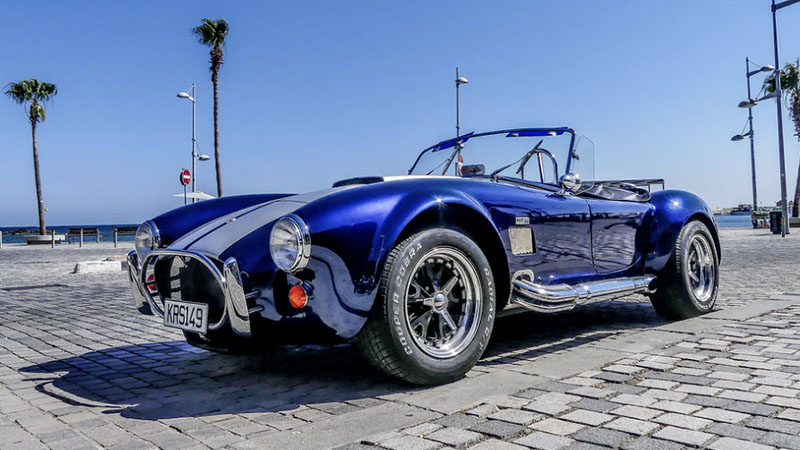
AC Cobra | Steven Feather | Flickr
Maybe one of the best-known examples of marrying American muscle to European style, the AC Cobra was the brainchild of American entrepreneur Carroll Shelby. It started out life as a fairly typical British roadster way back in 1962, powered by a stodgy inline-6 made by Bristol. With a curb weight of only 2300 pounds, the potential was there, but not the power.
Bristol discontinued their inline-6, and a few AC's were cobbled together with '50s-era Chrysler Hemi engines before the company went with an English Ford Zephyr inline-6. The company was then approached by Carroll Shelby, asking if they could build him a car that would work with an American V8. He courted Chevrolet, but they weren't interested in a direct competitor for the Corvette.
Ford, however, was quite interested. Happily, the AC required little in the way of tweaks to suspension, brakes and steering to accommodate a Ford engine. They shipped completed rolling chassis to Shelby's shop in Los Angeles, where they were set up with Ford 260 or 289 V8s.
Shelby experimented with other engines, including Ford's 390 FE V8, until the Cobra was fitted with a 425 hp version of Ford's 427 side-oiler FE engine. It was, of course, ridiculously fast with a 0-60 time of under five seconds, and notoriously hot and hard to handle. It was a brute of a car that inspired songs and countless model kits and is still talked about today in near-legendary terms.
The Cobra wasn't a financial success, and Shelby stopped importing AC cars in the mid-'60s. Like with the Sunbeam Tiger, there are plenty of clones and "continuation cars" out there, though. In fact, in the early '90s Shelby even got in hot water for "counterfeiting" his own cars and reselling them as the real thing.
What do you think of this combination of European design and American power?


